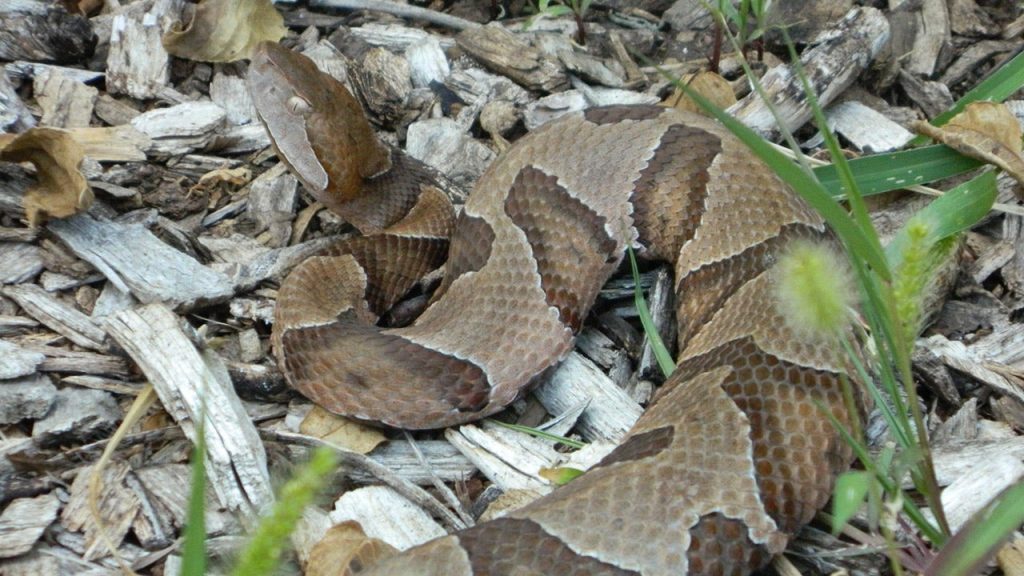Wildlife officials in Somerset County, New Jersey issued a warning to be on guard for northern copperhead snakes after one of the species was seen in Watchung. The northern copperhead snake is described as having two shades of copper or a reddish-brown color and is found in rocky fields, berry thickets, woodlands, and farmlands. This species is one of two venomous snakes found in New Jersey. Despite their reputation, copperheads are much less dangerous than believed, relying on camouflage rather than venom to defend themselves. Tyler Christensen, a PhD candidate studying copperheads at Rutgers University, emphasized the importance of learning to differentiate copperheads from nonvenomous snake species.
Copperheads are known for their cryptic camouflaging abilities, making them difficult to spot in outdoor settings. Scott L. Parker, a professor at Coastal Carolina University, advised against touching or approaching copperheads if encountered. These snakes are not aggressive towards humans and will typically try to escape when left alone. To avoid potential encounters with copperheads, the University of Virginia recommends wearing boots while hiking, using a flashlight at night, and refraining from touching or picking up any snakes. It is important to be cautious when exploring areas near streams, rivers, or lakes, as these are common places where snakes can be found.
Despite the warning being issued in New Jersey, copperheads are prevalent in other parts of the nation as well. Christensen noted that millions of people in the eastern U.S., especially in the Southeast, live in close proximity to copperheads without even realizing it. The best way to stay safe around these snakes is to avoid touching or approaching them if encountered in the wild. In the event of a bite, it is important not to attempt to capture or kill the snake, but to seek medical treatment immediately. Understanding how to respond if encountering a copperhead and being aware of their presence in outdoor settings can help prevent potential conflicts.
Copperheads are surprisingly calm and docile, usually delivering a bite as a last-resort defensive effort. Their venom is mild compared to other viper species, making them less dangerous. Parker emphasized the importance of not putting hands or feet anywhere they can’t be seen to avoid accidental encounters. It is recommended to always wear shoes and use a flashlight when walking outside at dusk or after dark in the summer. While copperheads may be difficult to spot, Parker reassured that these snakes typically do not want anything to do with humans and will try to escape when left alone. Being aware of their presence and taking necessary precautions can help prevent dangerous encounters with copperheads.
If encountering a copperhead in a natural setting, it is best to simply leave it alone and allow the snake to retreat. Most snake bites occur when individuals try to handle or move the snake themselves. It is important not to attempt to capture or kill the snake if bitten, but to seek medical attention promptly. While copperheads may be common in certain regions, understanding their behavior and respecting their space can help prevent conflicts and ensure safety for both humans and snakes. The University of Virginia’s tips for preventing encounters with copperheads provide practical advice for staying safe while exploring outdoor areas where these snakes may be present.


